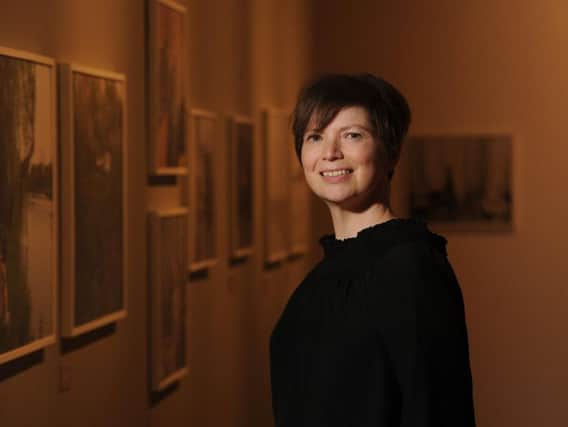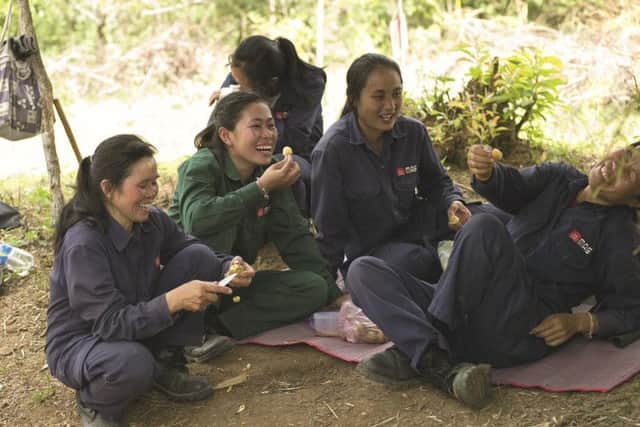How harrowing photos helped lay bare Nazi atrocities and horror of Holocaust - New book explores relationship between photography and war


For most people, the term ‘war photography’ would probably conjure up the image of a black and white action shot capturing the chaos or aftermath of battle. But given the nature of war, with its long-term effects and consequences impacting on many lives beyond those of the combatants, perhaps that is a limited view.
This notion is addressed in a new book by photo-historian Pippa Oldfield, Head of Programme at Bradford’s Impressions Gallery. In Photography and War, published last month, Oldfield explores the wider applications of photography in wartime.
Advertisement
Hide AdAdvertisement
Hide AdThe fascinating story of the Yorkshire landmarks that were camouflaged during World War Two“Generally when we think about photography and war we think about photojournalism and men with cameras slung around their necks – people like Robert Capa and Don McCullin – but I felt that was very narrow and quite restrictive in terms of whose viewpoint was being shown,” she says.


“A lot of the work I have done over the years on exhibitions I have curated for Impressions has been connected with conflict and I felt I had something to say about that.”
As part of her PhD, Oldfield had been looking at the ways in which women used photography at a time of war. She had been particularly interested in women photographers during the Mexican Revolution – which took place between 1910 and 1920 – and during the Second World War.
That research began a thread of thought which led to her writing the book. “Gender is such a big part of how we think about war,” she says. “There are the traditional gender roles – the men do the fighting, the women stay at home and those are quite clearly defined. But sometimes unexpected things happen like, for example, women moving in to men’s jobs during wartime.
Advertisement
Hide AdAdvertisement
Hide Ad“I wanted to move away from exclusively white male European and American photographers – they tend to dominate the narrative – and dig a bit deeper to see what I could find; other stories and viewpoints and to gain a more rounded understanding of how war affects people.”
It has taken Oldfield around seven years to gather together her material and images. “I always had a really clear idea from the outset on how the book would be structured and I knew that I didn’t want it to be chronological, I wanted to do it thematically,” she says. “I wanted to look at a variety of aspects of the relationship between photography and war that cut across different contexts and historical periods.”
The book is divided into five broad chapter headings – Despatches from the Combat Zone, Military Vision, Home Fronts, Secrets and Exposures and Legacies. In wartime we see the very best and worst of humanity – and it is that complexity and drama which continues to fascinate us.
What long-lost Second World War letters reveal about life at home for Yorkshire womenAs Oldfield says, in her introduction to the book, ‘war remains a fundamental experience that shapes and transforms lives on a mass scale, from which photography is inseparable’.
Advertisement
Hide AdAdvertisement
Hide Ad“It was really fascinating and rewarding and it was great to have the freedom to write about such a massive subject,” says Oldfield. “It goes back right to the beginning of photography – war was a genre in painting, it is something people have always been interested in, so it is unsurprising that it appears so early on in the history of photography. The Crimean War was a huge turning point – Roger Fenton’s pictures were widely exhibited and people came to see them.”
Fenton is generally considered to be one of the first official war photographers, commissioned by the British government of the time to record events during the Crimean War. His photographs include the iconic image Valley of the Shadow of Death, taken near the location of the ill-fated Charge of the Light Brigade in 1855.
By the time of the American Civil War in the 1860s, photography was more widespread with many photographers drawn into the lucrative market of portraiture – capturing soldiers on their way to or returning from war. Oldfield found two particularly interesting examples of this.
“There were some photographers I didn’t know about before I started writing the book and it was really exciting to make new discoveries. Elizabeth Beachbard totally captured my imagination. She was one of those commercial photographers who realised the American Civil War was good for business.
Advertisement
Hide AdAdvertisement
Hide Ad"She had a studio in New Orleans and she packed up all her stuff to follow the Confederate army to a military camp where she established a studio in a wooden cabin photographing soldiers prior to deployment. She is the first identifiable American woman war photographer.
“I was also very impressed by Elise Harleston who was an African American woman professional photographer who had a studio in Charleston in the 1920s which was incredibly unusual at the time and she took some amazing photographs of African American Civil War veterans.”
Another major theme of the book is the symbiotic nature of the relationship between war and photography. “I wanted to look at how armies use photography in reconnaissance – that’s something we don’t often think about, but it’s probably the biggest driver for any advance in photographic technology,” says Oldfield. “During the Second World War there were 20 million photographs taken a month for military purposes including reconnaissance, weapons training, maps and charts.”
The first Jamaicans to settle in Leeds have shared their memories of the post-war cityIn some ways, photography actually enables warfare, but it also has an important part to play in the aftermath of war – in particular in helping to bring war crimes to light and perpetrators to justice. “Photographs have that evidentiary power,” says Oldfield. “And there have been many times when that has become important.”
Advertisement
Hide AdAdvertisement
Hide AdLee Miller’s shocking photographs taken in 1945 at the concentration camps of Buchenwald and Dachau, for example, published as a photo-essay in Vogue entitled Believe It, showed the world unequivocally the extent of the Nazi atrocities. The unimaginable horror of the Holocaust was laid bare. And photographs like those taken by Miller and others were the first step to ensuring that those responsible for the killings faced criminal prosecution.
Once justice has been done, photography can continue to play a part in helping communities to acknowledge what has happened in order to move on. It was important to Oldfield to also include this aspect in her book. “I really wanted to feature stories of hope, positivity and humanity, so there are images of protest, of opposition to war and supporting truth and justice, peace and reconciliation,” she says.
“And I felt it was really important to include something on how we recover from war. Our culture is much more geared towards war rather than the alternative – war photography is a genre but peace photography isn’t. There are a lot of really horrific things in the book but there are also stories of amazing resilience, ingenuity and humanity.”
Photography and War by Pippa Oldfield, is published by Reaktion, and is on sale at Impressions Gallery in Bradford and online. Visit the website for more information.